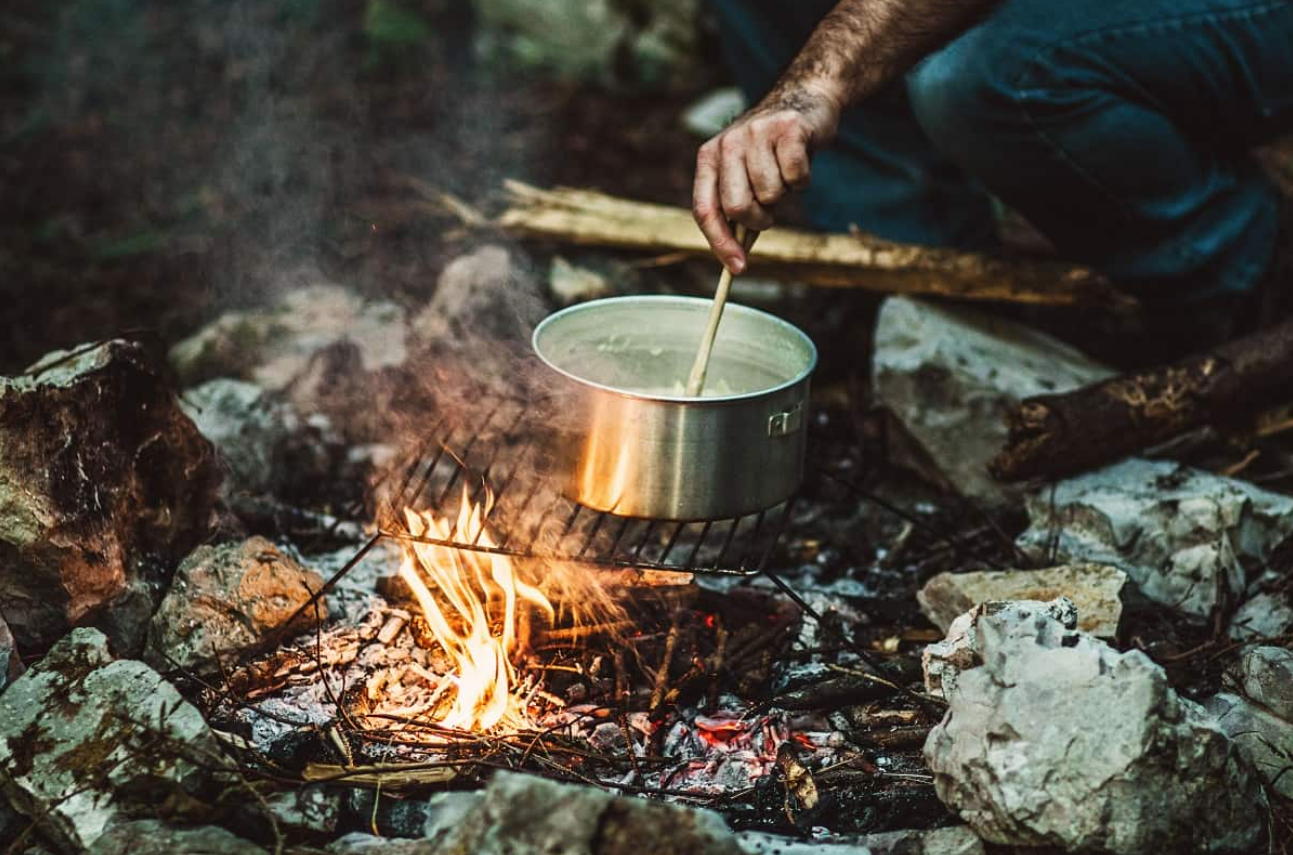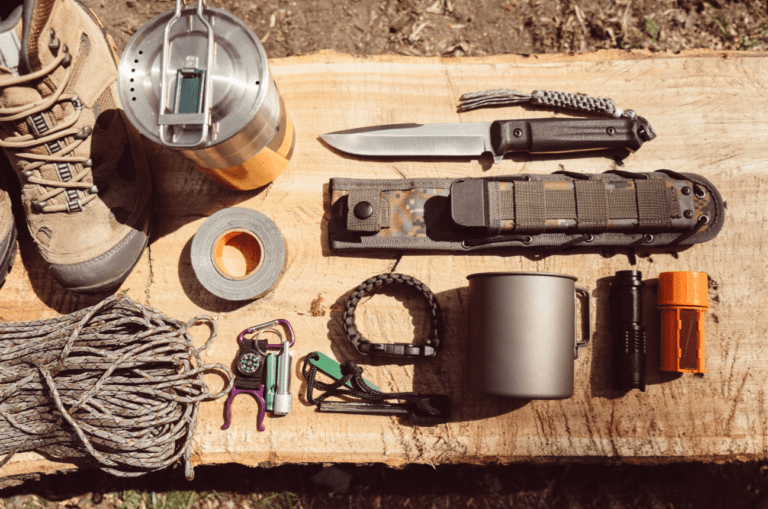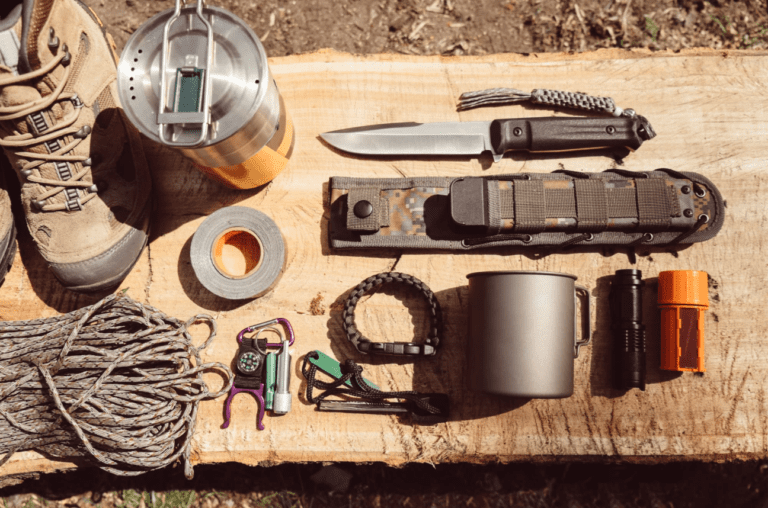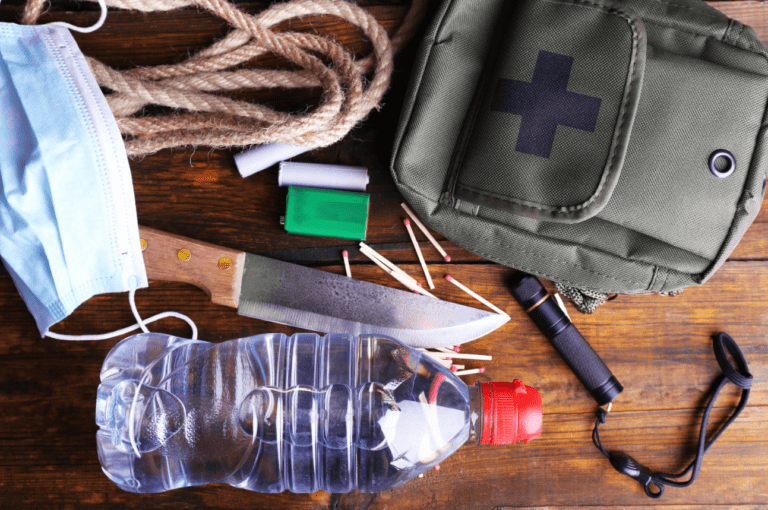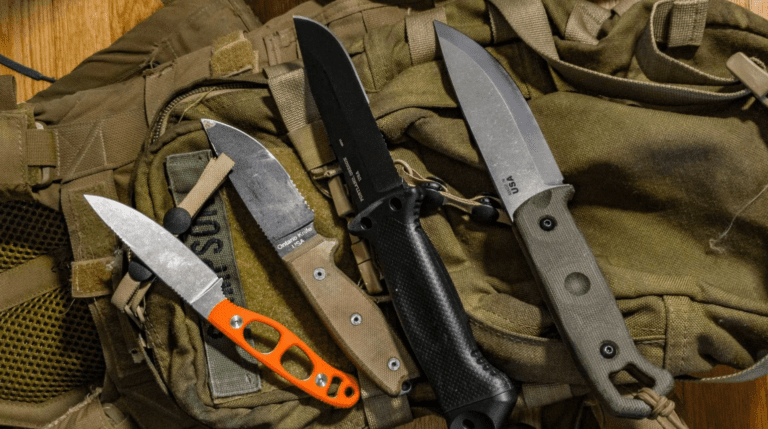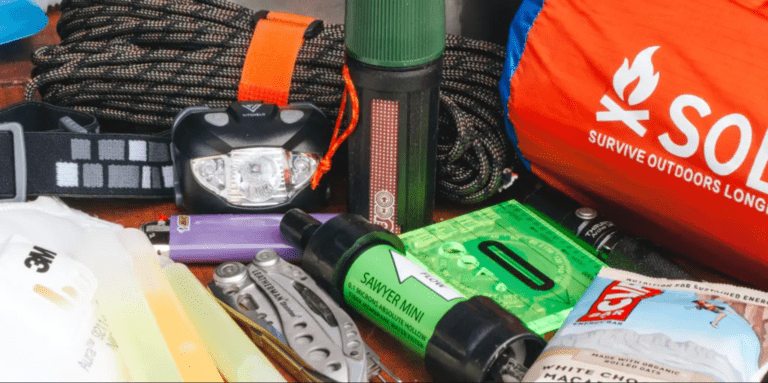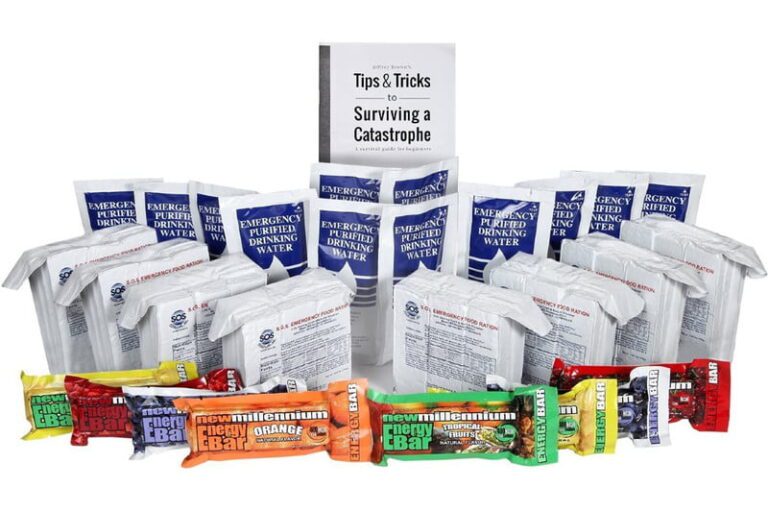Best emergency food supplies to stock up on now
These pre-packaged, long-shelf-life emergency food kits are a must-have for any survival kit.
As we’ve all learned over the past few years, emergencies happen. Some of us also had an awareness that we needed to be better prepared in case of an emergency – be it (another) epidemic, natural disaster, or local conflict. One of the best ways to be prepared is to stock up on emergency food supplies.
The best emergency food supplies come out of storing your own canned or dry food supplies. The best emergency food supply kits are usually in the form of a bucket full of individually packaged foods that can be cooked easily and quickly. This means not researching individual items, making emergency food taste better, and doing less if you need to prepare anything during an emergency. Plus, the streamlined packaging of survival rations lets you easily stash them in the car, closet, or garage.
However, picking up an emergency food supply doesn’t have to be all doom and gloom. Because they offer high-calorie meals in a compact, easy-to-cook package, emergency food supplies also make a great choice for long camping trips, backpacking, and other such adventures.
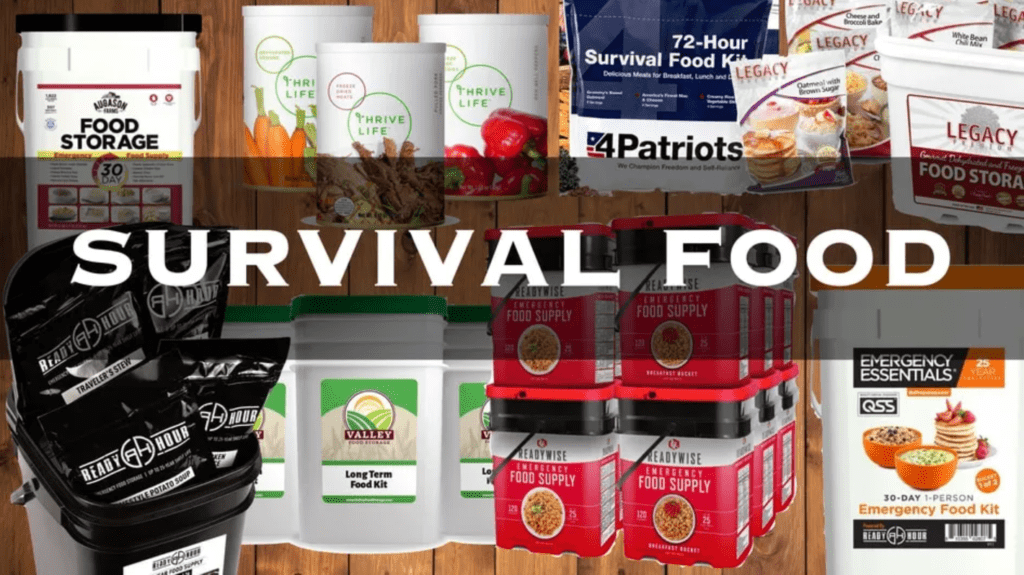
Guide to buying emergency food supplies
No matter how you plan to use your emergency ration, we’ve got you covered. Below is a quick guide to finding the best emergency food supplies, as well as our top six picks to stock up on right now.
Shelf life: Ideally, emergency food items sit on the shelf until they spoil. But, depending on which supply you choose, they may need to be replaced sooner rather than later. Shelf life varies considerably, with emergency food lasting from five to 30 years. Some brands even guarantee a specific shelf life while others give a range. The latter is preferred.
Servings: Serving sizes are especially important in emergency food supplies if you are feeding a whole family. Of course, more is generally better, but it also means that the food will take up more space while in storage.
Preparation: The best emergency food supplies contain foods that can be prepared quickly and easily. Make sure to know how each meal is prepared and what other equipment is needed (usually it’s just hot water).
Nutrition: Calories are what are needed in emergency situations. Look at the total calories in the meal kit, as well as how many calories are in each meal (it should be about 200 to 300 calories per meal). Also, check the nutrition facts for each food in the kit. Lack of certain nutrients such as protein or vitamins.
Taste: Although nutrition is the main concern in an emergency, food must still taste good. Emergency food supplies have come a long way over the years with better tasting foods, so it’s worth finding kits with good flavors.
What is the best emergency food supply?

You don’t actually have to face an emergency to stockpile emergency food supplies. Pick up these items online now and stash them in your pantry, closet, or car to be prepared in case of an emergency.
1. Mountain House Classic Bucket
Mountain House is one of the best food supply brands on the market, providing nutritious freeze-dried food in easy-to-store buckets. One of the brand’s big draws is the 30-year shelf-life guarantee, which lets you keep the bucket aside for decades without worry. This classic bucket, which weighs just 5.7 pounds, contains 24 servings and five types of food, such as chicken fried rice and beef stroganoff. These foods are also packed with nutrients including protein, iron, and potassium. To prepare the meal, fill the bowl-like package with hot water and wait ten minutes – that’s it.
2. Ready-wise emergency food supply
If you’re stocking up on emergency supplies for a large family (or just want to be extra prepared), check out this bucket from ReadyWise. It contains 120 servings of freeze-dried food and packs it all into one bucket that weighs just under 20 pounds. With a 25-year shelf life, you won’t need to restock anytime soon. ReadyWise also includes a rich range of 13 dishes, from lasagna to tortilla soup to teriyaki and rice. All of them offer plenty of balanced nutrients without any trans fats. To prepare food, simply add hot water and wait 12 to 15 minutes.
3. Survive2Thrive Organic Emergency Food Kit
Even in an emergency, it pays to be vigilant about what you’re eating. That’s why we recommend this certified organic emergency food supply from Survive2Thrive. Unique food supplies provide a wide variety of individually vacuum-sealed meals that are combined for a 40-day supply. Instead of prepackaged meals, Survive2Thrive supplies individual, highly nutritious ingredients such as beans, oats, quinoa, rice, and pancake mixes. The container weighs 36 pounds, which is a little heavier than others, but a necessary sacrifice for healthy, organic food.
4. Mountain House Essentials Bucket (Gluten Free)
Whether you’re celiac or gluten-free by choice, there’s no need to break your diet in an emergency. This gluten-free essentials bucket from Mountain House includes four meals like rice and scrambled eggs with chicken and bacon — all made without any wheat, barley or rye ingredients. You get a total of 22 servings, which is about enough to feed one person (by heart) for four days. Like all of Mountain House’s outstanding food products, the gluten-free bucket has a guaranteed shelf life of 30 years.
5. Ogasan Farms’ Variety Peel Emergency Food Supply
Augason Farms has been family owned and operated out of Salt Lake City since 1972, and their products are still the best emergency food supply kits on the market. This four-gallon cup packs 92 servings and 21,170 calories into a portable, easy-to-store package. Inside, you’ll find 11 types of food including entrees, soups, and even a chocolate pudding dessert. Ogasan Farms’ Pile has a shelf life of 10 to 25 years depending on how well it is stored: ideal conditions are 55 to 70 degrees Fahrenheit and 15% humidity.
6. 4Patriots emergency food supply
If you’re looking for something smaller (say, for just one person), this 4Patriots Emergency Food Supply is a great choice. The compact 2.2-pound bag contains 16 servings for a total of 3,760 calories, enough to last one person for three days. Even though it’s small, you still get three meal options: mac and cheese, oatmeal and creamy rice, and a veggie dinner. Each meal has over 200 calories and a solid serving of nutrients. The bag has a shelf life of 25 years, so you can keep it in your pantry or closet for decades without worry.
7. S.O.S. Ration emergency food bar
This Emergency Bars Ration from S.O.S is a great healthy choice. The package contains nine fortified food bars for a total of 3,600 calories. They require no preparation and provide fast, easily transportable energy. This makes the S.O.S. The bars are ideal for hiking, large emergency food supplies, or storing in your car or boat. The shelf life is five years, but, unlike the options above, this rating is for “climate conditions”. This means the bars will survive up to five years in harsh weather and possibly much longer under ideal storage conditions.
Important features to consider
Our researcher and tester for this project have taken outdoor education classes in the Canadian wilderness, so they are familiar with the basics of emergency food needs and priorities in a survival situation. We also checked the US Federal Emergency Management Agency and Red Cross guidelines for what is recommended for urban emergencies in urban environments.
We’ve tested essential food preservation tools before, including the best multi-purpose food slicers and the best food dehydrators, and it’s worth considering the option of making your own preserved food from home. For many families, it may not be worth checking and rotating dry food stocks every year when commercial options are readily available.
After checking out other guides and discussions on Reddit’s r/preppers, The Prepper Journal, and mysurvivalforum.com, we carefully compared the most popular choices with official guidelines and a home or car survival kit. combined their list of criteria. Here are the top concerns you should be aware of when shopping:
Water: If you’re preparing for an emergency, you’ll also need to have a plan for storing potable water. You can probably survive for weeks without food, but you will die after three days without water. FEMA has excellent guidelines for preparing emergency water stores. Remember that you will need additional water to prepare dry food, about 24 ounces per person per day. Portable water filters, like some of our picks for the best filtering water bottles, can also clean dirty water you find in an emergency.
Calorie Count: You should try to always have enough food on hand for a three-day disaster, but how much is that for your family? If you’re packing up your car, remember that when working to build a shelter or walk to safety, you should count on consuming about 4,000 calories per person, per day. If you are sedentary you may only need half of that, but in any case, you should know how much food you have in your kit, and plan how long you can last. Will be able to keep it.
High-temperature stability: If you’re storing an emergency food supply in your car or attic, remember that high temperatures will reduce the stable shelf life of anything that contains water. Even unripened wheat will not last more than five years above 70 degrees Fahrenheit. Of course, if you can store your kit in a cool, dark place, everything will last significantly longer.
Predictable shelf life: You need to know how long your emergency stash is guaranteed to stay fresh, then be sure to use and replace it before then. For example, commercial freeze-dried foods are usually guaranteed for decades, but MREs and canned foods will need to be replaced every few years, depending on how long you store them. How hot is the location?
Efficient preparation: In an emergency, boiling dinner for twenty minutes to get the perfect texture can be a waste of precious fuel. We tested the food kits with the expectation that we would have a way to boil water in an emergency, but we also tested samples made with just cold water to see if the electricity without fuel would work. How will they fare in the situation?
Heat packs MRE pouches often — though not always — contain water-powered chemical heaters so you can enjoy your processed meats or rehydrated beverages at room temperature instead. These heaters add to the cost of military surplus MREs, so if you plan to stock up on fuel and stoves with your emergency cash, you may find it economical to buy civilian-based kits that can replace them. They leave.
Variety: While a balanced menu is important for long-term health, a little variety in a short-term emergency kit can help stave off anxiety and frustration.
Don’t forget an old food rotation plan: An annual emergency preparedness exercise is a good way to make sure you don’t neglect your emergency kit. Even if your food supply has a good chance of being edible for a decade past the expiration date, the whole point of an emergency food stockpile is to eliminate additional risk when you’re against it. The problems are already there.
Our list
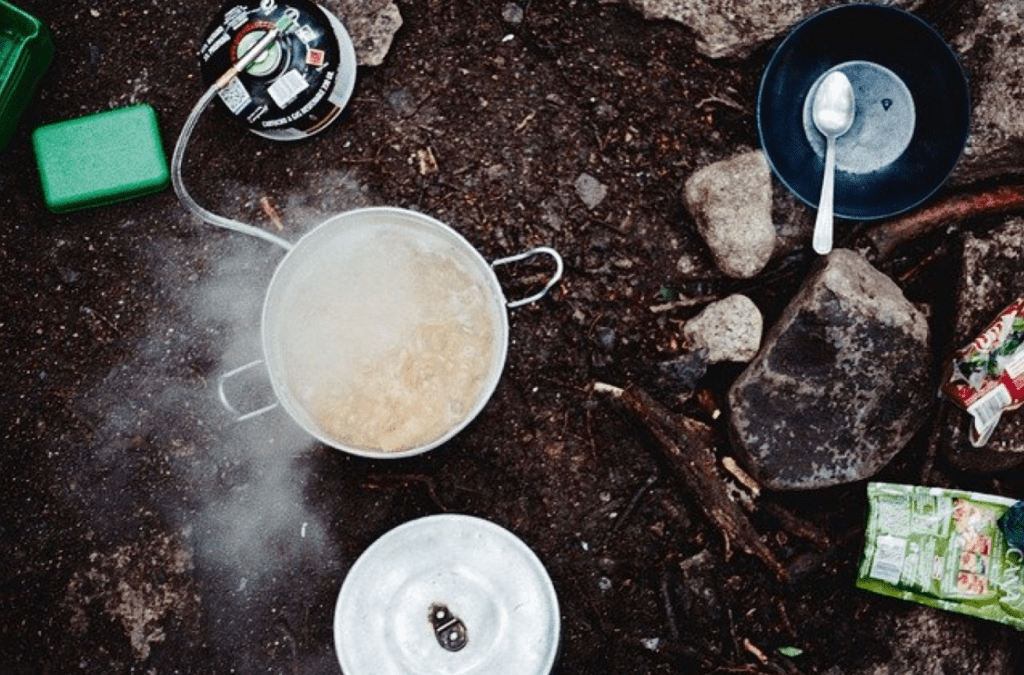
After reviewing the variety of ingredients and cost per calorie of three-day survival food kits offered by top-rated suppliers, we’ve selected three dry meal kits, six MRE options, and three emergency ration kits. made a choice Our test family ate from these kits over the course of a week, and after their first-hand experiences preparing and eating them, they ranked the following as the best emergency food:
1Mountain House – just in case
Mountain House is the most popular freeze-dried food brand we found, with food pouches that are popular with backpackers and preppers alike. All the food in this box is cooked before being freeze-dried, so you can prepare it quickly – even if you only have cold water.
If you had to eat one of these pouches every day, it would be a bit salty and too much for a sedentary life. There isn’t much fiber on offer either. But if you’re just preparing to get through a few days of trouble, here’s the balance of high-calorie staples and flavor-enhancing sauces and seasonings we’ve tried.
Pros
- Easy to prepare, even cold
- Guaranteed to taste good after 30 years
- Tastes good
- Pouches can be re-sealed if you only want to make small portions
Cons
- The most expensive option
- Requires boiling water for best taste
- Still only 1–2 grams of fiber per meal
2Military Surplus MREs
If you want an emergency meal that you can keep in a bag and eat anywhere, military surplus meals, ready-to-eat or “MREs” are your best bet. We bought a random lot from Western Frontier and individually selected (and package date guaranteed) foods from Ozark Outdoorz. These pouches are packed with an average of 1250 calories each, so two pouches per person will be more than enough if you’re just waiting out the storm.
The downside to ready-to-eat food is that it’s heavy, and it doesn’t last long on the shelf. These foods make the most sense as just a day’s worth of your emergency supply, with the rest dry. That way you have something on hand if you get really stuck, but you’re not lugging around extra weight.
Compared to canned soup or pasta, MREs are more expensive, but they offer a more balanced meal and are easier to open. The downside is that it’s hard to find a reliable place to buy them: Amazon and eBay have dozens of sellers with surplus military cases, but if you want a date guarantee or a pick-me-up, you can check out Ozark Will pay a premium from a seller like Outdoorz. Select which menu options you want. We looked at “civilian label” MRE suppliers, but most of the big companies were selling less complete MREs at higher prices than we paid for hand-picked surplus.
MREs have a good shelf life, but you should still eat them and replace them every five years to avoid the risk of something going bad, and every three years if it’s hot. Be where you store them.
Pros
- Really ready to eat.
- Some MREs include heat packs.
- Good variety of items for full meals
- Minus sign cons
Cons
- Availability is sometimes inconsistent
- Menu selection is random unless you pay a premium.
- Shelf life is not as long as dry food
3Datrex – DX2400F
If you want the most compact, energy-dense meals, ration bars are an easy answer. Datrex – DX2400F Multipurpose Ration Bars will keep for five years (or more) and are very easy to store in a car, boat or cabin. These are the easiest ration bars for toddlers to chew, a little powdery but otherwise similar to shortbread.
If you’re in a situation where you don’t know how long it will be until you get food again and you need to keep moving or stay warm, this is basically as good as rations can get. Each individually wrapped bar inside the package contains 200 calories from fat and carbohydrates, so an entire package of 12 should last a person for three days.
You won’t want to last more than those three days, but the rations are only designed to give you the energy you need to find shelter, then water, then a more sustainable food supply. You can keep a box of slightly more palatable rations on hand, but everything we’ve tested in our best protein bars review will need to be replaced annually.
Pros
- Ultra compact and lightweight power source
- Guaranteed shelf life of five years
- Cheaper than other bars
- Minus sign cons
Cons
- Eating dry cookies for days is not fun
- Not a balanced diet.
- Limited water storage space can be better used.
4Agson Farms – Variety of buckets
It was hard to find the best value in a ready-to-use meal kit, but Augason Farms – Breakfast & Dinner Variety Pack is our pick at about $1 per 400-calorie serving. The kit includes a balanced set of menu items, and you even get mood boosters like milk and chocolate pudding.
The downside of such a budget-friendly kit is that the meal consists only of uncooked pasta and boiled rice mixed with sauce. You can eat this stuff by soaking it in boiling hot water—that’s how we tried it—but you need to. Boil them to get the best texture. It’s similar to the ready-to-cook side dish packets you’ll find at the grocery store for the same price.
If you want to DIY-assemble a kit like this, you can add your own selection of ingredients, but you probably won’t save money unless you’re really into simple cereal and plain macaroni and cheese. Don’t load up on boxes of cheese. Like most grocery store options, these pouches are not resealable, so you’ll need to plan to eat your supplies one pouch at a time or find a way to seal the pouches and keep all moisture out of the bucket. .
Pros
- Excellent shelf life
- Includes a wide range of menu options.
- Minus sign cons
Cons
- Dry food is more expensive than what you can buy separately.
- Most dishes require boiling.
- 4 serving pouches are not resealable.
4 Agson Farms – Variety of buckets
It was hard to find the best value in a ready-to-use meal kit, but Augason Farms – Breakfast & Dinner Variety Pack is our pick at about $1 per 400-calorie serving. The kit includes a balanced set of menu items, and you even get mood boosters like milk and chocolate pudding.
The downside of such a budget-friendly kit is that the meal consists only of uncooked pasta and boiled rice mixed with sauce. You can eat this stuff by soaking it in boiling hot water—that’s how we tried it—but you need to. Boil them to get the best texture. It’s similar to the ready-to-cook side dish packets you’ll find at the grocery store for the same price.
If you want to DIY-assemble a kit like this, you can add your own selection of ingredients, but you probably won’t save money unless you’re really into simple cereal and plain macaroni and cheese. Don’t load up on boxes of cheese. Like most grocery store options, these pouches are not resealable, so you’ll need to plan to eat your supplies one pouch at a time or find a way to seal the pouches and keep all moisture out of the bucket. .
Pros
- Excellent shelf life
- Includes a wide range of menu options.
- Minus sign cons
Cons
- Dry food is more expensive than what you can buy separately.
- Most dishes require boiling.
- 4 serving pouches are not resealable.
5 S.O.S Food Lab – Emergency Ration
Like the Datrex rods, the S.O.S. Food Lab – Emergency Ration Bars are a reliable source of easy-to-carry calories in situations where you need to be on the move. Unlike individually wrapped Datrex bars, the S.O.S. The ration is pressed together into large chunks that you need to separate with a knife. You should definitely pack them inside a resealable bag so they don’t get dirty once the foil-lined bag is opened.
S.O.S. Powdered rations are closer to shortbread than Detrix rations, and come in cinnamon or coconut flavors. Our test toddler couldn’t figure out how to eat them, though; He just sucked the bits we gave him.
6 Wise Company Freeze Dried – Wise Company – Emergency Food Supply
Halfway between Ogasan Farms’ basic raw foods and Mountain House’s delicious freeze-dried options, the Wise Company – Emergency Food Supply Pile claims you don’t need to cook these entrees, and the sauce lives up to the brand name. Side-dish pouches you’d buy at the grocery store (for the same price – about $2.50 per 400 calories.)
You’re not saving any money buying dry food this way compared to Sides’ DIY collection, and you don’t get breakfast or dessert options as you do with Augason Farms. That said, Wise Company’s entree has a thicker sauce and tastes a little better when you’re just adding water and can’t boil the food.
This meal still isn’t as tasty or easy to prepare as what Mountain House offers, but it’s nice to have a middle ground that you can use to supplement other emergency supplies. The pouches are not resealable, so this type of kit is perfect for a family or group that plans to eat four servings at once.
7 Survival Tabs – ST-96T
Survival Tabs – ST-96T Emergency Rations are another option for easily storing emergency food supplies. Unlike Datrex and S.O.S bars, this is really the most basic form or calorie count you can find, just sugar, oil, and milk solids with some mineral supplements pressed into a capsule. They are surprisingly tasty and very compact. The pouches contain 24 loose tablets, which you should take at a rate of one per hour while you are walking or working to get shelter.
Living on them would be better than starving, but for most people, it would take weeks. Remember that storing some water should be a priority over raw calories. Datrex rods are slightly easier to handle and more economical to store, but survival tabs are a viable alternative.
Best Emergency Food Kits for Disaster Preparedness
What to Consider
The first question is how much food you should have on hand. The answer varies depending on the number of people you are storing for and the amount of storage space you want to dedicate to emergency food rations. Start by evaluating your family or group (including pets) and their recommended daily calorie intake. You may want to talk to your doctor or pediatrician before purchasing an emergency food ration to get advice on nutritional needs to maintain the overall health of each individual.
Once you have that basic information, finding the best kit for you boils down to individual tastes, dietary restrictions and preferences. Emergency kits usually include calorie-dense comfort food — things like mac and cheese, hearty soups and casseroles, and chili. Some kits also include breakfast — usually cereal or granola — along with snacks, drinks and dessert. Most companies offer sides as part of their product lines, so you can buy things like fruits and vegetables separately to add to main meals. There are also emergency ration bars and survival tab packs—small, nutritious meal replacements that require no preparation—that you may want to include in your stockpile.
How did we choose?
Every emergency food kit we write about below has an average customer rating of four stars or higher, and they all come from top brands, including ReadyWise, Mountain House, and Ogasan Farms, among others. Some small producers offer high quality boxes. Special diet. Our selection includes options at multiple price points, including those that are budget-friendly, plus we have kits that come in a variety of sizes.
The ultimate preparedness emergency food kit
Key details
- Number of servings: 124
- Shelf life: 25 years
- Weight: 13.4 pounds
- Dimensions: 12.5 x 12.3 x 12.2 inches
Readywise is a well established company known for its value packed food kits. This option includes 124 servings for three main meals plus a drink, fruit, and dessert — for just under $125 at the time of this writing. Examples of dishes include comfort food such as pasta alfredo, tomato basil soup, and apple cinnamon cereal, as well as freeze-dried peaches and vanilla pudding.
This kit is a customer favorite with an average 4.7-star rating from over 1,200 reviewers. “The food is very good quality. I will definitely order again!” Says a satisfied customer.
2 Agson Farms 30-day emergency food supply
Key details
- Number of servings: 307
- Shelf life: up to 25 years
- Weight: 24 pounds
- Dimensions: 18.3 x 1 3.5 x 12.4 inches
The kit contains enough food for one adult for 30 days, or a family of four for a week, with 307 servings and three meals per day, plus enough options for snacks and drinks.
The breakfast choice is maple brown sugar oatmeal, and there are mac and cheese, vegetable chicken soup and potato soup, cheesy broccoli rice and chicken-flavored rice, plus instant potatoes for entree options. It also includes a milk option and potassium-rich banana chips. The kit averages 4.7 stars from over 3,000 reviewers.
Key Specs
- Number of Servings: 298
- Shelf Life: 20 years
- Weight: 36 pounds
- Dimensions: 25 x 25 x 15 inches
For some, maintaining an organic diet is important, even in the event of a disaster. There aren’t many companies that produce USDA-certified organic emergency food rations, but this is one of them.
The EnerHealth Botanicals emergency food kit contains individual vacuum-sealed packets of superfood—all vegetarian—made to last for 20 years, and each is free of pesticides, artificial colors, refined sugars, and more. Examples of ingredients include quinoa, rolled oats, brown rice, pinto beans, black beans, and pancake mix.
3-day emergency food kit
Key details
- Number of servings: 18
- Shelf life: 30 years
- Weight: 3.6 pounds
- Dimensions: 13 x 10 x 9 inches
This emergency food kit gets high marks from consumers with an average of 4.7 stars from over 370 reviewers. It comes from the popular brand The Mountain House, which makes its own food without any artificial colors or flavors.
The box includes a serving of 18 hearty entrees, plus granola with blueberries and milk, enough to last one person for three days. For lunch and dinner, there are biscuits and gravy, chicken and dumplings, beef stroganoff with noodles, and chicken fried rice.
A five-star reviewer says these foods are “the best tasting” and have the “highest nutritional content” of any emergency food on the market. “The next time there’s a ‘shelter in place order, I won’t be at the supermarket hysteria over a few cans of tuna.”
2-day adventure bag
Key details
- Number of servings: 23
- Shelf life: up to 15 years
- Weight: 3.4 pounds
- Dimensions: 11 x 8 x 6.5 inches
This emergency food kit is technically for outdoor adventure camping, but we’re including it for its portability and waterproof case.
A two-day supply comes with 23 servings of breakfast, lunch, dinner, and snacks—including cookie dough bites—with wilderness-appropriate names like “Trailhead Noodles and Beef” and “Appalachian Apple Cinnamon Cereal.”
The downside is that it has a shelf life of up to 15 years, but we think it’s worth buying for convenience if you have to evacuate your home with emergency supplies in the car.
Gluten Free Emergency Food Kit
Key details
- Number of servings: 60
- Shelf life: 25 years
- Weight: 16 pounds
- Dimensions: 12.75 x 11.9 x 14 inches
For those who require a gluten-free diet, this legacy food supply is hard to beat. It offers 60 servings of lunch and dinner, and all of Legacy’s food is 100 percent GMO-free. They are stored in a mylar pouch with an oxygen absorber and nitrogen flush for extra freshness.
The kit has six entrees including a creamy potato soup, classic chili, white bean chili, a block of cheese and broccoli bake, enchilada, beans and rice, and a creamy la king.
Soy-free emergency food kit
Key details
- Number of servings: 144
- Shelf Life: More than 25 years
- Weight: 20 pounds
- Dimensions: 12.5 x 14 x 13.5 inches
If you are allergic to soy, this emergency food kit is definitely your best. In addition to being soy-free, the entrees in this NuManna kit are also GMO- and MSG-free, and contain zero high-fructose corn syrup or aspartame.
124-Ultimate Preparedness Pack
Pros
- Wide variety of food
- Drinks and dessert included.
- Some foods require no prep work.
- Good customer service
Cons
- Unclear instructions
ReadyWise has a history of great food kits for survival, backpacking, and emergencies. The brand’s Ultimate Prep Pack contains 124 servings with a solid mix of breakfast, lunch, and dinner options. The included drinks and desserts are a welcome addition that sets this apart from other family-sized kits. Everything from pasta alfredo to apple cinnamon cereal to vanilla pudding is, ready to go. Our main gripe is that the instructions are unclear or non-existent for some dishes, which require a bit of trial and error on our part to prepare. There are more affordable options, but this one costs less than $120.
- Number of servings: 124
- Shelf life: 25 years
- Weight: 14 pounds
- Dimensions: 14.75 x 11.75 x 9.75 inches
Variety of lunch and dinner dishes
Pros
- Good variety of food
- Convenient waterproof carrying bucket
- 30 years shelf life
Cons
- Servings are not individually wrapped.
- Mild taste and texture
For less than $100, Augason Farms’ aptly named Lunch and Dinner Variety Pack offers a good mix of — wait for it — lunch and dinner. A 92-serving kit will feed one person for a long time or a family of four for about a week. Unlike some other emergency food kits, the servings are not individually wrapped. This means preparing large batches at once and planning how to store leftovers, which can be a problem in a real survival situation. Still, for meals with more than 20,000 calories, this is our best value emergency food kit pick.
- Number of servings: 92
- Shelf life: 30 years (maximum)
- Weight: 13 pounds
- Dimensions: 11 x 14 x 11 inches
Only in case of 3 days emergency food supply
Pros
- Delicious, high quality food
- Compact, portable size
- Two-serving individual pouches
- Good variety for a small kit
- Ready in less than 10 minutes
- Can be made with room temperature water in a pinch.
Cons
- Carry case or bucket not included.
A three-day supply of food is sufficient for most emergencies. With 18 total servings, Mountain House’s Just in Case kit provides enough food—three breakfasts, lunch, and dinner—to feed two people for 72 hours. We’ve been buying Mountain House backpacker meals for years, largely because of the brand’s amazingly delicious dehydrated meals. This emergency supply kit is no different. Calorie for calorie, it’s pricier than comparable food kits, but we think it’s worth it based on quality alone. If we have one complaint, it’s that this kit lacks a carry case or bucket, so you’ll need to provide your own bag to get it ready to go.
- Number of servings: 18
- Shelf life: 30 years (maximum)
- Weight: 3.6 pounds
- Dimensions: 12.8 x 9.9 x 8.9 inches
